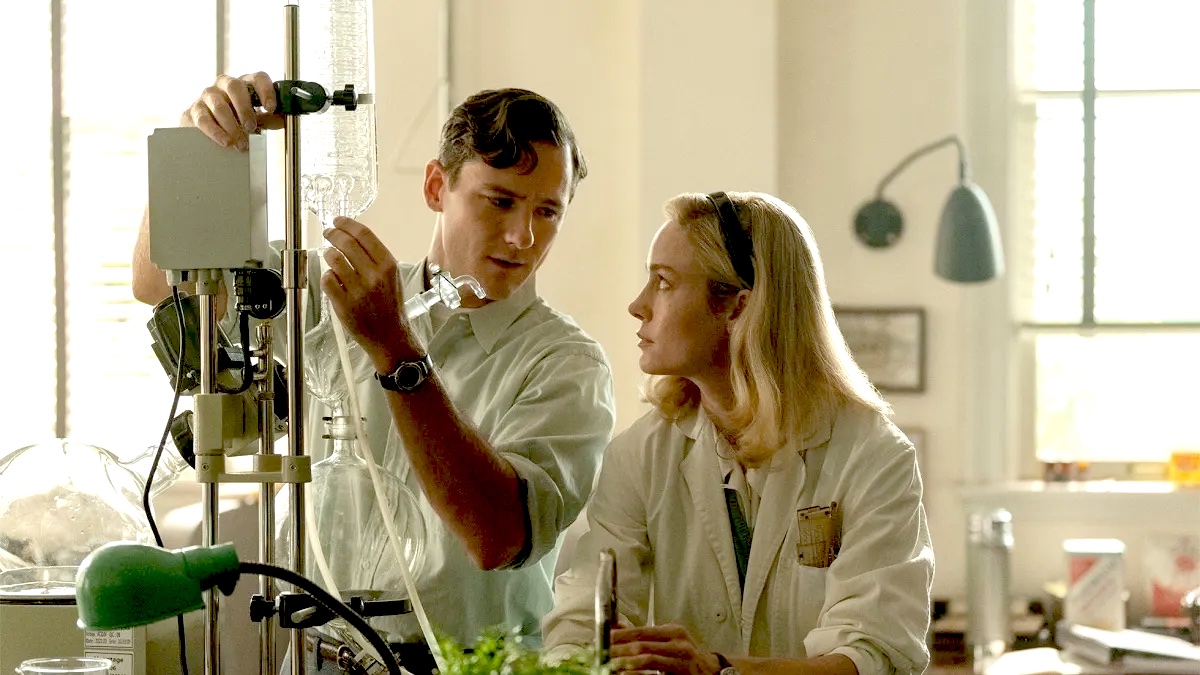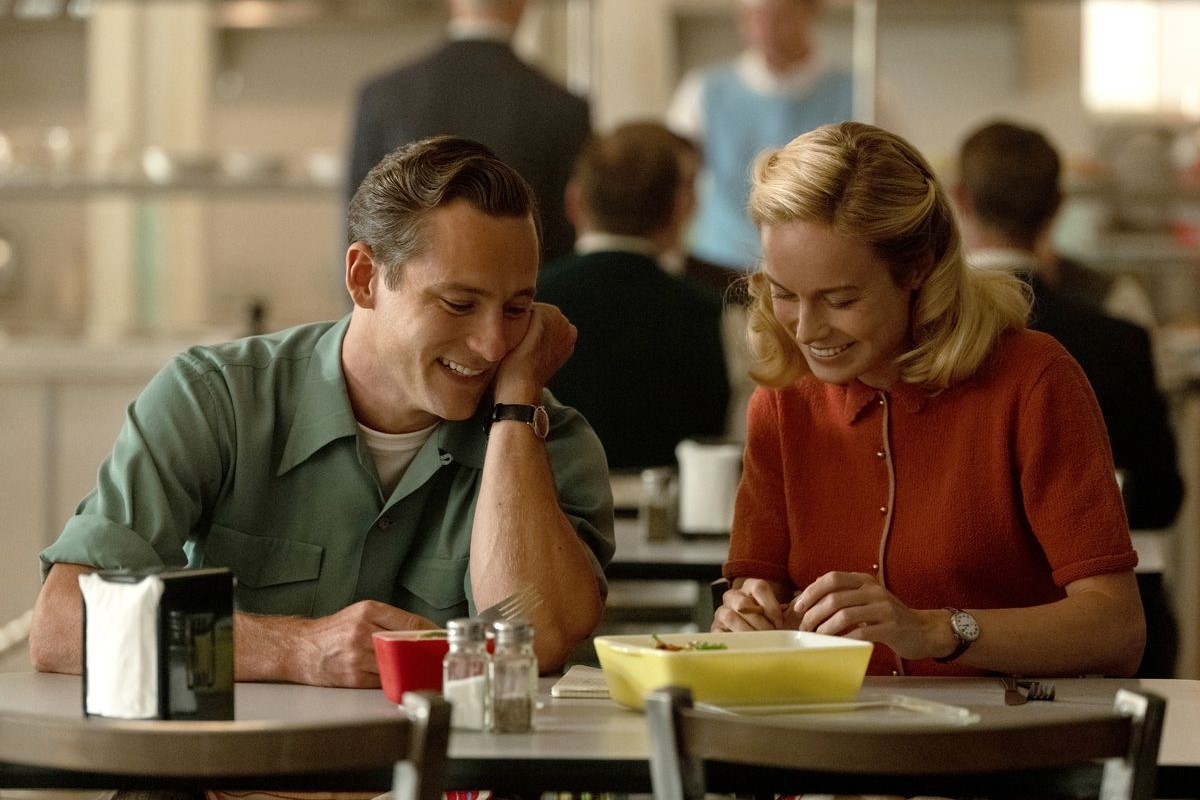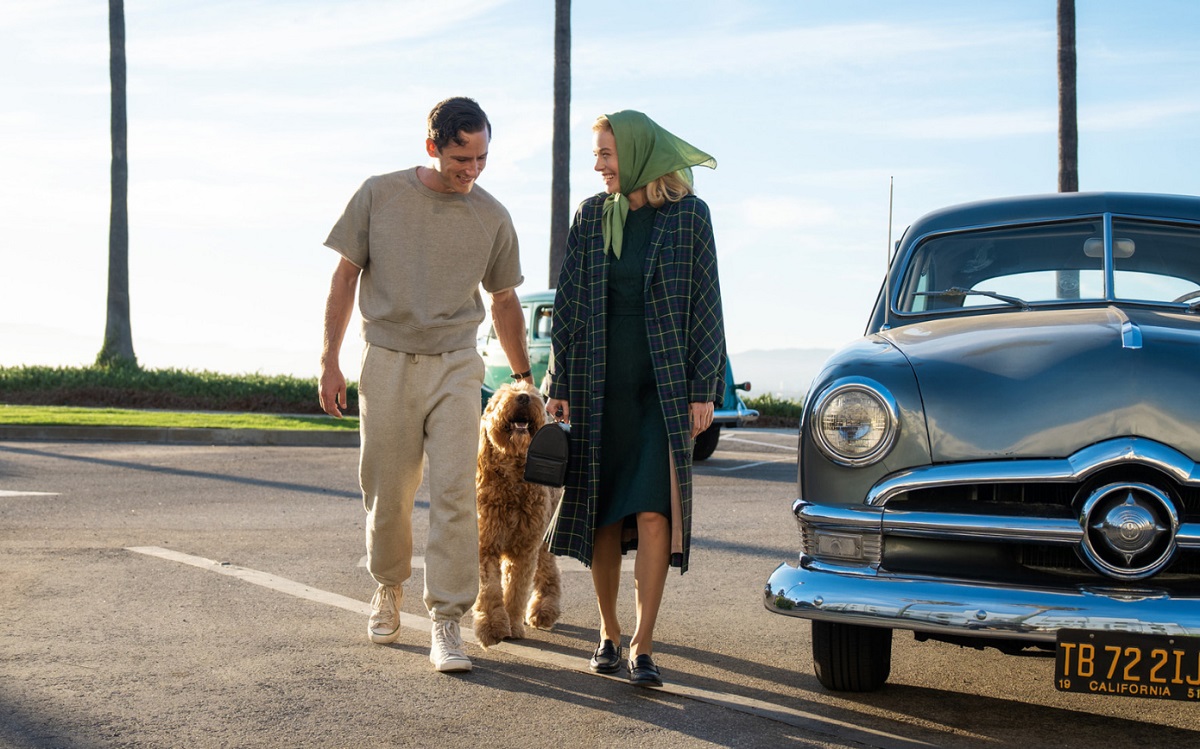‘Lessons in Chemistry’ Gives Us an Awesome Example of AuDHD Love

Apple TV+’s Lessons in Chemistry is not only a beautiful adaptation of a bestselling novel, but it’s a story that elegantly tackles issues of sexism and racism by using history to illuminate our present. Additionally, I was struck by how the show delivers a beautiful example of what an AuDHD romance can look like.
**Potential spoilers for Lessons in Chemistry ahead.**
Neither Elizabeth Zott (Brie Larson) nor Calvin Evans (Lewis Pullman) is explicitly labeled as being neurodivergent by the show’s text, nor would people like them have been labeled that way in the late 1950s/early 1960s, when the show takes place. However, so many of their “weird” behaviors, both individually and when interacting with each other, feel so familiar to me as a neurodivergent person.
Not realizing they have a romance
Elizabeth and Calvin don’t prioritize romantic relationships the way everyone around them does. People constantly comment on (and sometimes inform them directly) how strange they are, and how they could “be happy” and land a partner if only they would act like everyone else.
Their interaction is hostile at first. Calvin (like everyone else) is steeped in Patriarchy and makes the same assumptions about Elizabeth everyone else does because of her gender and job title. However, once he learns she has a Master’s Degree in chemistry and experiences how brilliant she is, he’s immediately drawn to her—not romantically at first, but as a like-minded person. He’s excited by the way she thinks and what she knows and never wants to stop talking to her about chemistry.
Likewise, Elizabeth is drawn to Calvin in spite of herself. She actively doesn’t want to get married or have children. When Calvin calls her late at night to continue a conversation they were having in the lab, her gut response is annoyance. Yet, a smile quickly emerges on her face, she grabs her notebook, and they proceed to geek out on the phone about their research.
Neither of them thinks about the romantic possibilities until long after anyone else around them might have, because in this time and place, being genuinely passionate about a shared interest isn’t what “romance” looks like. Men have their interests, women have their interests, and they “fall in love” in spite of them. The idea that a woman and a man would have the same level of interest in anything, especially an intellectual pursuit, is unusual in this setting.
So, even Elizabeth and Calvin don’t see the romantic possibilities at first, despite each of them clearly being attracted to the other.
Hyper-focus as an expression of love

Elizabeth and Calvin don’t have “dates” like other people. To them, “having fun” is being in the lab. It’s the work. Chemistry isn’t something either of them wants or needs a “vacation” from.
Those around them, even supposed fellow scientists, don’t seem to understand the level of passion and devotion they have for their work. Both Elizabeth and Calvin prioritize chemistry above just about everything else, including taking care of themselves.
Calvin lives on peanuts, because he doesn’t prioritize meals over his work. Meanwhile, Elizabeth incorporates her work into meals. She only cooks beautifully because she’s obsessed with her work, and it’s probably the only reason why she remembers to eat at all. Cooking is just another opportunity for her to engage with the chemistry she loves. If home cooking were something that men were encouraged to do, Calvin would’ve likely done the same thing. If Elizabeth were a man, she too would likely live on peanuts.
Neither of them has family (by circumstance or by choice), and there’s no one else in their lives who understands why they care this much about science. Elizabeth and Calvin each start the story very much alone. When they find each other, the gratitude is palpable. Neither of them is particularly effusive, but you can feel the emotion bursting out of them once they’re each around someone who finally gets it—someone who finally appreciates their level of passion rather than pities or looks down on it.
Though Elizabeth wondered if Calvin knew she loved him after his sudden death, this is how they showed each other love. She never had to say it, nor did he. They gave each other the most meaningful gift: the gift of time, space, and partnership in exploring their favorite area of hyper-focus without judgment.
Stimulation and structure

One of the more interesting elements in the depiction of their relationship is their differing approaches to getting work done.
Calvin feels the most familiar to me as someone with ADHD. He loves jazz, because of the way it meanders and surprises the listener. He blasts music when he works, because it “helps him think.” He jogs in a time when running as a hobby isn’t a thing, because physical movement helps him think. He’s someone whose best ideas come when he can get into his body, or when he can occupy his loud brain with stimulating sound. What’s “distracting” for others actually clears his mind.
Elizabeth seems more autistic-coded. She prioritizes routine and order to quiet her brain. She needs a clean space and an ordered lunchbox. She prefers the craft of pop music over the unpredictability of jazz. She even names her dog Six-Thirty, after the time he wakes her up every morning. She prioritizes routine so much that she names her dog after it.
Hell, she named her daughter “Mad,” because a nurse suggested that she could name her child after what she was feeling in that moment, and Elizabeth took her literally.
When Elizabeth says she doesn’t like jazz, Calvin introduces the compromise of alternating days so that they can each have what they need every other day, allowing Elizabeth to find some appreciation of jazz in the process. Elizabeth gives Six-Thirty to Calvin as a “running buddy.” She knows Calvin needs his physical activity, and that routine would also be helpful to him. So she basically gives him use of her dog as both a furry alarm clock and as a companion in his other area of interest that she doesn’t share. Meanwhile, Calvin tries to teach Elizabeth to swim, and while that version of physical activity doesn’t work for her, she eventually finds something worthwhile in rowing and running.
They love each other by protecting each other’s needs for stimulation, structure, and routine.
It isn’t until after Calvin’s death, when Elizabeth questions him in her head, about whether he knew she loved him, that I even realized they never said the words “I love you” to each other while he was alive. It struck me, because they never needed to say those words for me to know it was true. Their handling and support of each other’s “quirks” was louder than anything they could’ve said, and I was so grateful to see such a lovely depiction of what loving a neurodivergent person can look like.
(featured image: Apple TV+)
Have a tip we should know? [email protected]